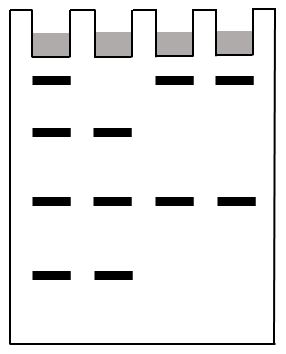This website uses cookies to ensure you get the best experience on our website.
- Table of Contents
Total protein assays measure the total amount of protein in a sample, most commonly by changing the optical density of the sample in proportion to the concentration. By creating a standard curve based off of the changes of optical density in samples of known concentration, it is possible to calculate the protein concentration in any sample.
One of the first issues to consider when conducting a total protein assay is the type of assay to use. A primary factor to consider in making your choice is the compatibility of the assay with the samples. The objective is to select an assay that requires the least manipulation or pre-treatment of the samples, and will give good results for your sample type.
Use this comparison chart to help decide which protein assay is right for you
| Assay kit | Advantages | Disadvantages |
|---|---|---|
| Coomassie Plus Protein Assay Kit | Fast, compatible with reducing agents | Incompatible with detergents, yeilds poor resutls with very low concentrations |
| BCA Protein Assay Kit | Compatible with detergents and denaturing agents, low variability | Incompatible with reducing agents |
| Micro BCA Protein Assay Kit | High sensitivity and precision | Sensitive to copper reductants and chelating agents |
Keywords: Western blotting optimization, total protein analysis, protein quantification assay, BCA, commassie, protein silver
Click for more optimization tipsProtocols, optimization tips, troubleshooting guides, and more for Western Blot.
 Technical
resources
Technical
resources
Download troubleshootingnhandbooks for IHC, Western blot and ELISA for FREE.
Get to learn the concept behind our best practices on Western Blot optimization. Learn how to optimize every aspect of your experiment to yield the best results.
See MoreLearn the concept behind Western blotting. It is a technique that is used to detect specific proteins in the given sample. It usually involves two major processes, namely, SDS-polyacrylamide gel electrophoresis and protein blotting and testing.
See MoreEach Western blot experiment involves a unique antibody interacting with a unique sample under varying conditions. No single antibody or antigen concentration will work for every experiment. In order to obtain the most perfect Western blots, the antibody concentration needs to be optimized. The ideal antibody concentration is dependent on the concentration of antigen, the specificity and affinity of the antibody, and experimental conditions such as buffer composition.
See MoreThe first step to obtaining a clear, accurate Western blot is, of course, sample preparation. The critical step of sample preparation, the choice of protein extraction method, is a crucial one which ultimately makes the difference between a blank blot and a beautiful one. Boster supplies a range of lysis buffers and specialized extraction kits; use this guide to pick the right one for your task and start getting better results.
See MoreTroubleshooting Guides Protein Quantitation Assay After protein sample collection, the concentration of proteins should be quantified to ensure equivalent loading amount of each protein. Protein Extraction Protein Extraction from Cell Culture Culture...
See MoreLearn A Stepwise Western Blotting Protocol From Reagent Preparation To Detection With Application Of BosterBio Reagents . Check Out Our ELISA Protocols To Learn How To Get The Best Results.
See MoreThese artifacts are most commonly the result of uneven coating of buffer or antibody, the membrane drying out, or aggregates forming in the antibody or blocking buffer. Learn about Western Blot Principle Western Blot Sample Preparation Check out this...
See MoreTo obtain the best results from your western blot, you must decide which type of blocking buffer to use based on the detection system used and the antigen you’re trying to detect. For example, the phosphate in PBS interferes with alkaline phosphate detection systems, making TBS blocking buffer the better choice.
See More